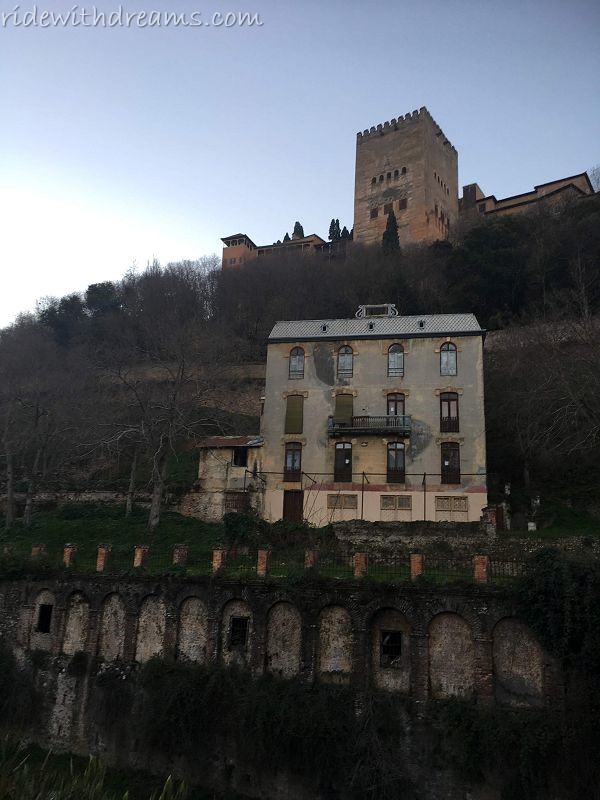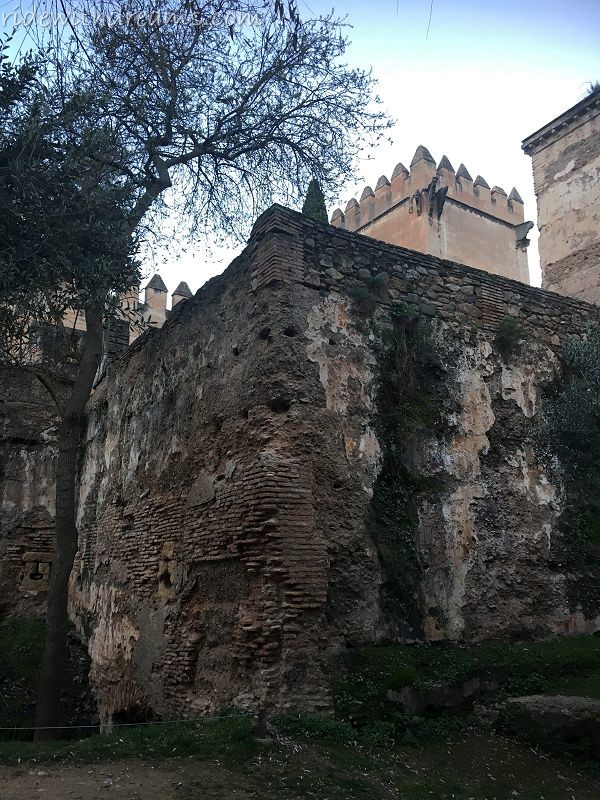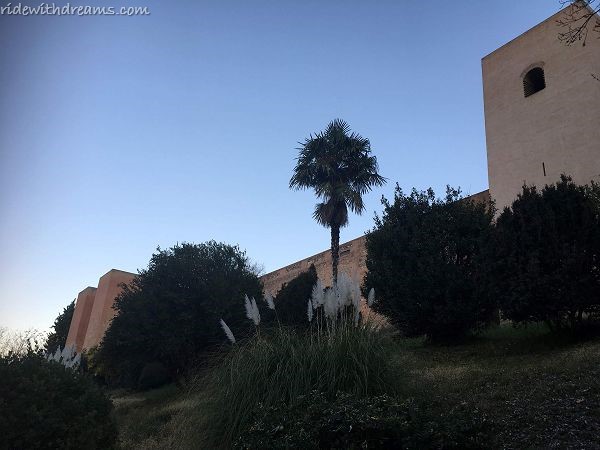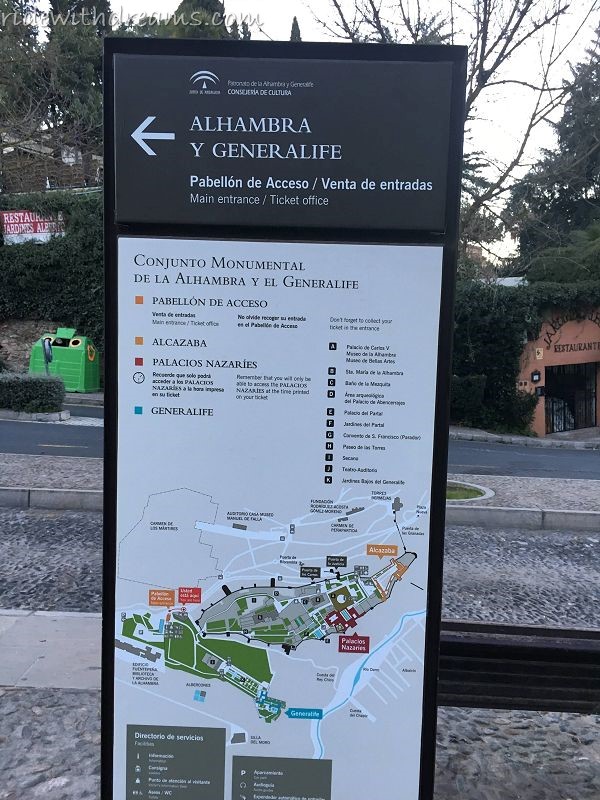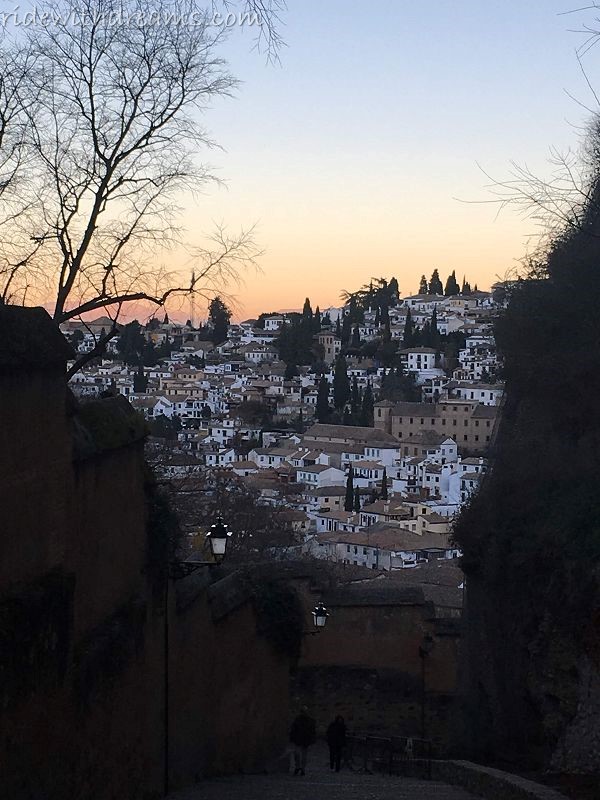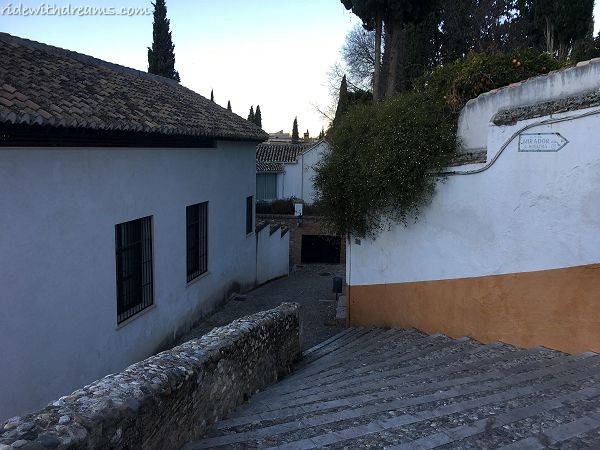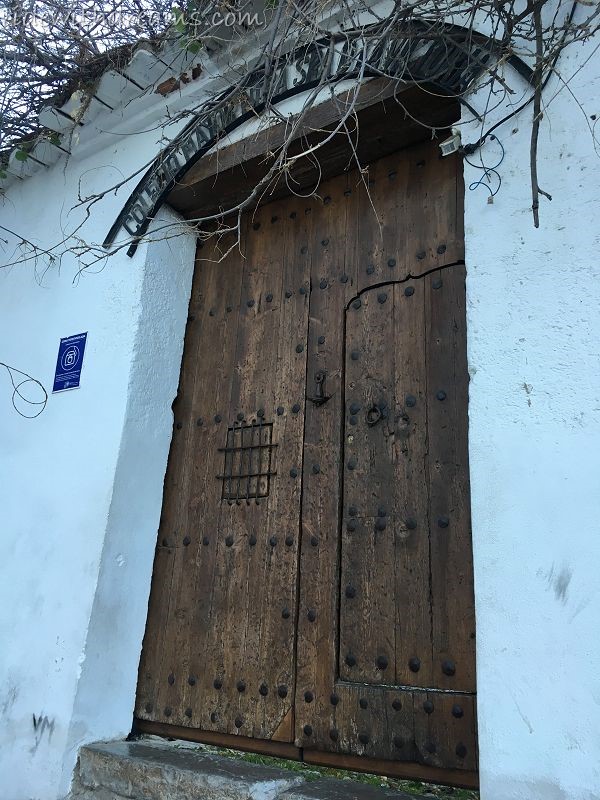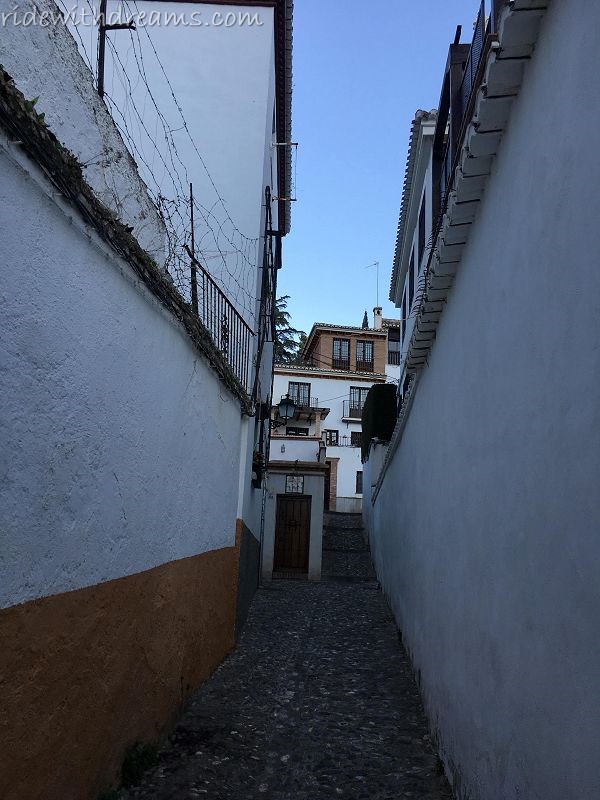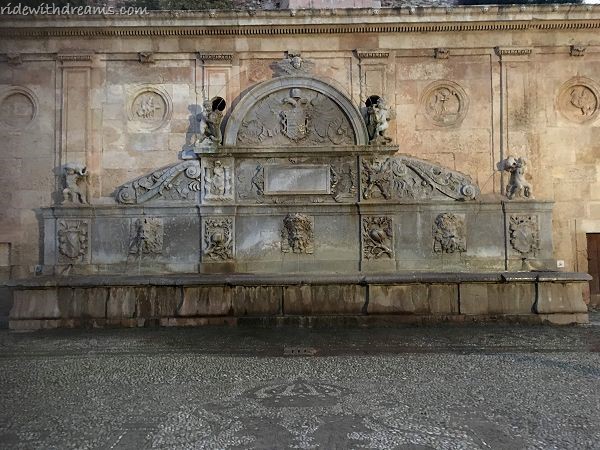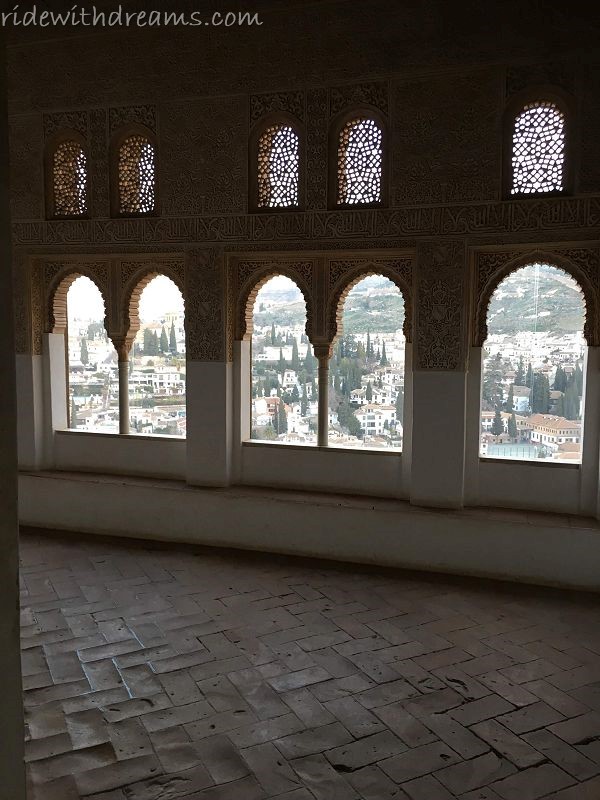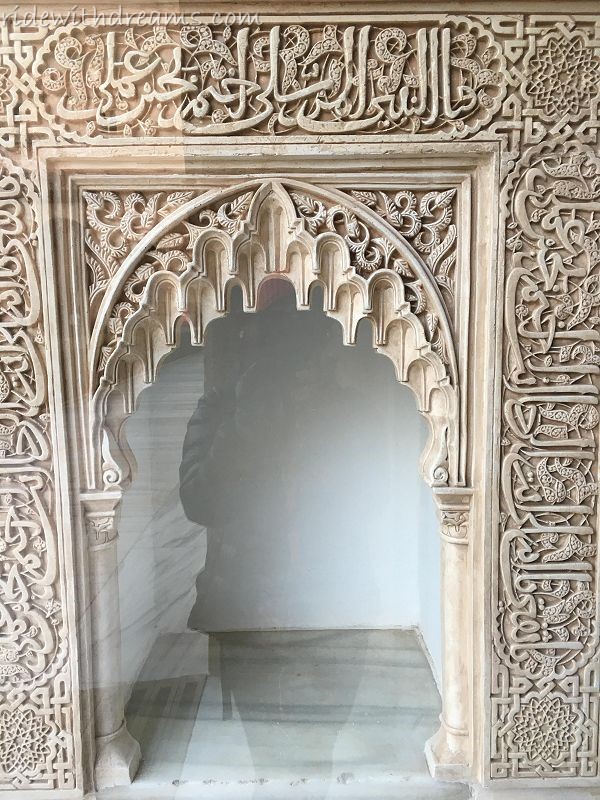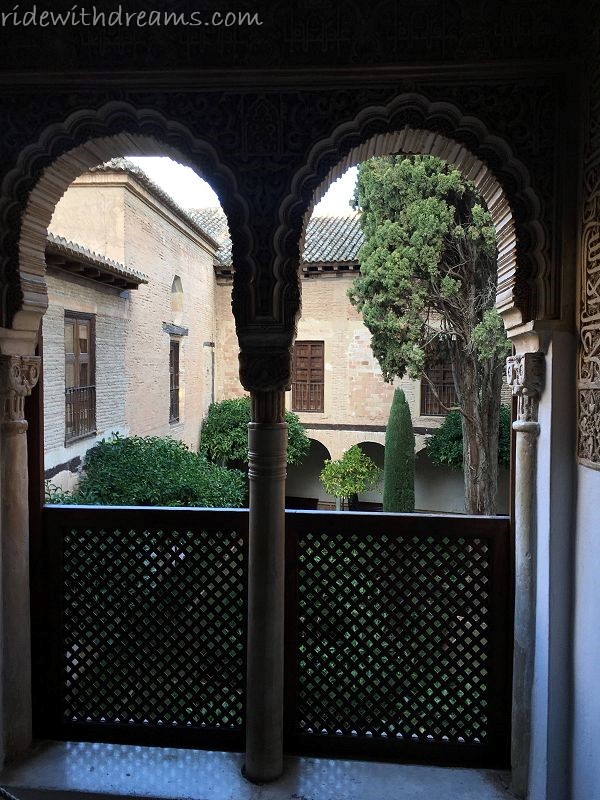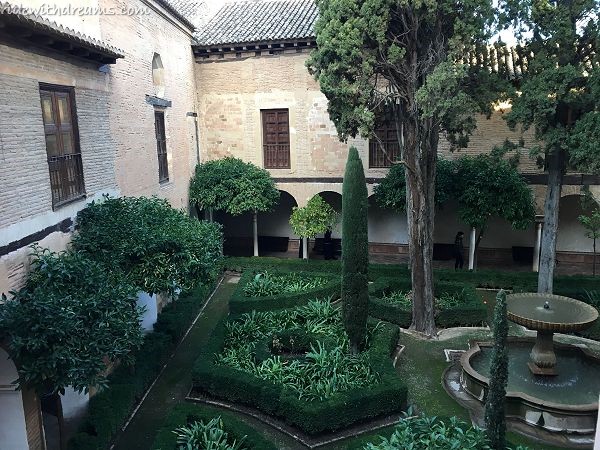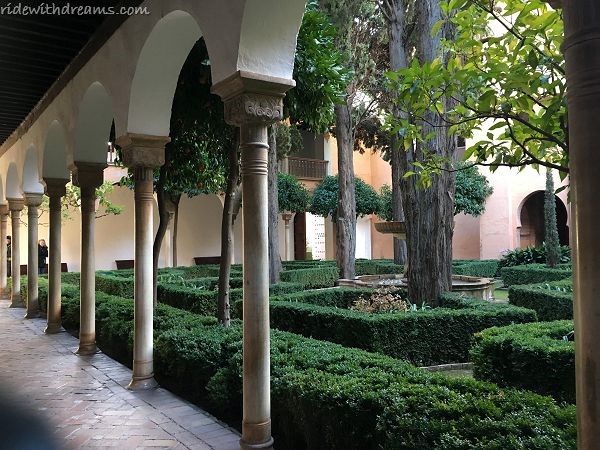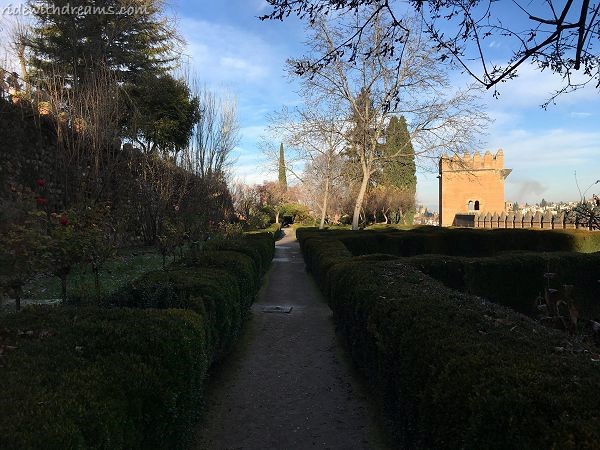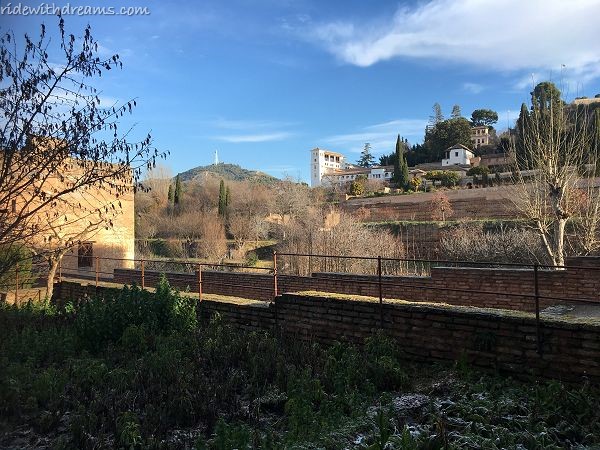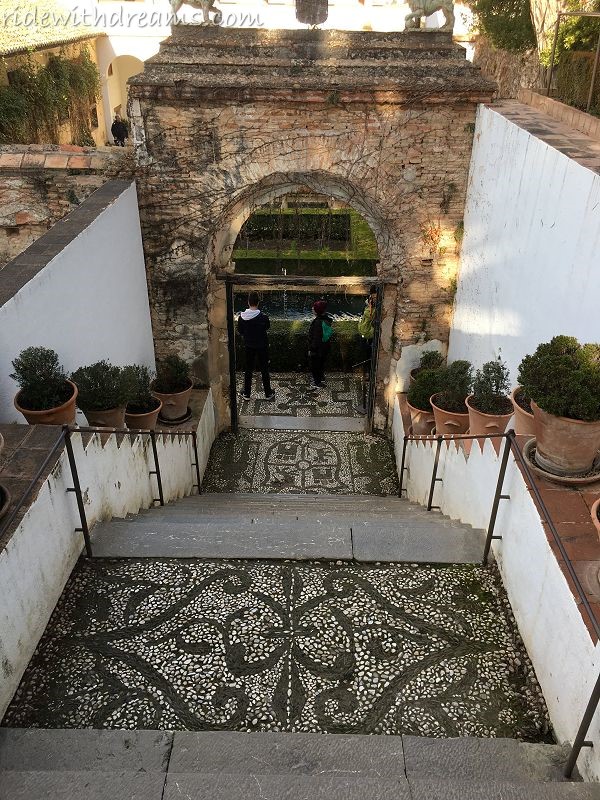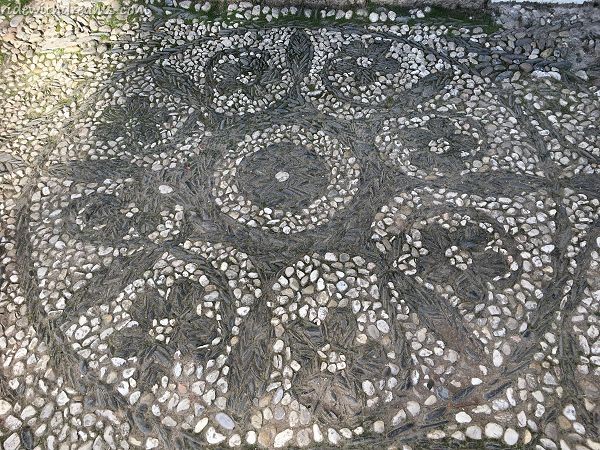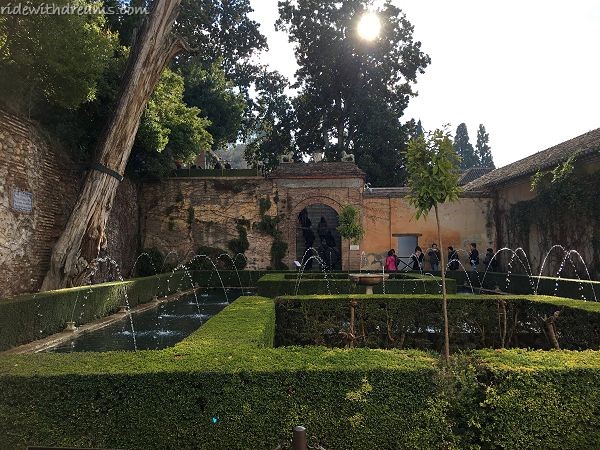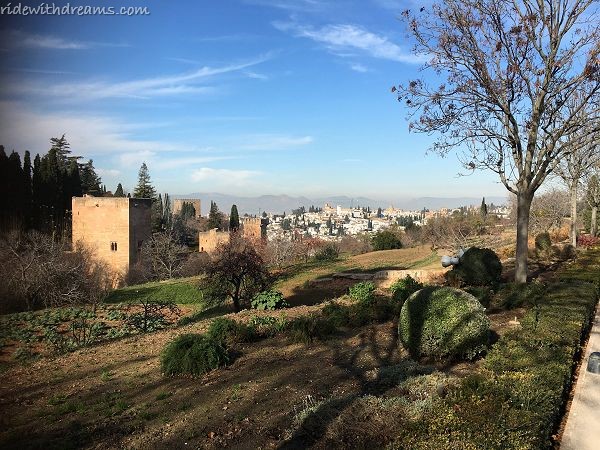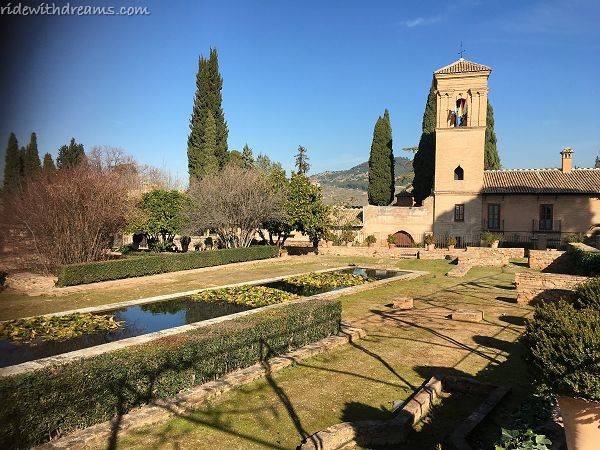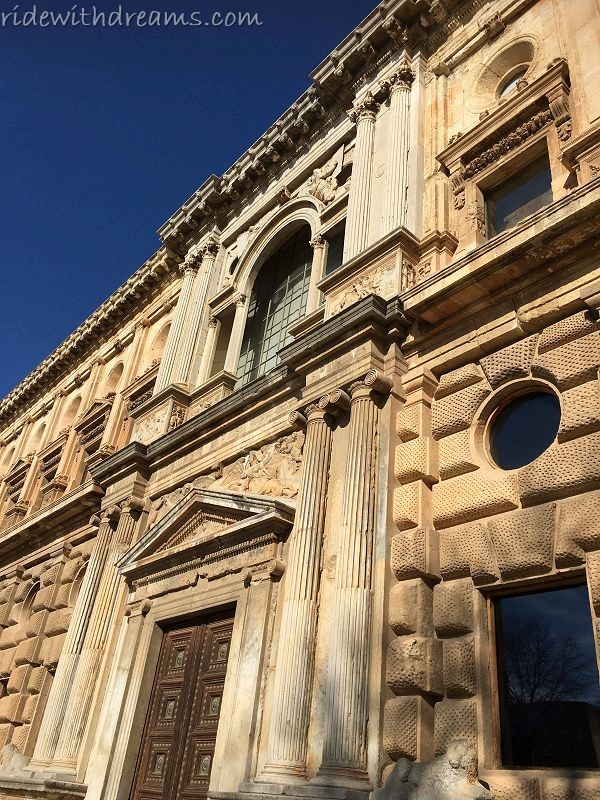Alhambra was like a very huge Islamic palace. Although I had visited several famous Palaces in Europe before, the size of Granada and the extensiveness of its “countless” buildings and gardens were like I have never seen before.
===== From Wikipedia =====
The Alhambra (meaning ‘The Red One’) is a palace and fortress complex located in Granada, Andalusia, Spain. The complex was begun in 1238 by Muhammad I Ibn al-Ahmar, the first Nasrid emir. It was built on the Sabika hill, an outcrop of the Sierra Nevada which had been the site of earlier fortresses and of the 11th-century palace of Samuel ibn Naghrillah. Later Nasrid rulers continuously modified the site. After the conclusion of the Christian Reconquista in 1492, the site became the Royal Court of Ferdinand and Isabella, and the palaces were partially altered in the Renaissance style. In 1526, Charles I of Spain commissioned a new Renaissance palace better befitting the Holy Roman Emperor in the revolutionary Mannerist style influenced by humanist philosophy in direct juxtaposition with the Nasrid Andalusian architecture, but it was ultimately never completed due to Morisco rebellions in Granada.
Alhambra’s last flowering of Islamic palaces was built for the final Muslim emirs in Spain during the decline of the Nasrid dynasty, who were increasingly subject to the Christian kings of Castile. After being allowed to fall into disrepair for centuries, the buildings occupied by squatters, Alhambra was rediscovered following the defeat of Napoleon I, who had conducted retaliatory destruction of the site. The rediscoverers were first British intellectuals and then other northern European Romantic travelers. It is now one of Spain’s major tourist attractions, exhibiting the country’s most significant and well-known Islamic architecture, together with 16th-century and later Christian building and garden interventions. The Alhambra is a UNESCO World Heritage Site.
The land of Alhambra was endless viewing from the hill, and its gardens were so large that it was impossible to be covered by foot. We had spent many hours inside Granada, we still only had covered a part of it.
All these buildings, walls, roofs were all sculptured with extremely detailed and unique Islamic patterns or tiles. It is unimaginable how much manpower must have costed to build Alhambra, how many workers and craftmen must have spent their whole life in this huge project.
In fact, it was so huge, owned and extended/rebuilt by different dynasties/emperors, it was never completed. It was like the Great Wall in China. Although its ticket was not cheap, and require reservation days ago, I’m glad that I had the chance to visit it.
We stayed at an apartment near the city center. It was just 1-2km from Alhambra, so I jogged to Alhambra every morning before Dawn. Unlike many western palaces, Alhambra does not have river surrounding it, but instead it was built on top of long steep hill, and surrounded by high stone walls. Every morning I jogged past riverside, and then steep uphill for quite long, past several gates until the entrance. However, the high stone walls were partially damaged. I stared at the stone walls and didn’t understand how they were so ruined. I didn’t know until much later that, I was jogging to the Rear side of Alhambra. That’s why the view was different. The Front side of Alhambra has a garden and an elegant front gate.
From Alhambra, you can oversee the complete town of Granada, you can also see beautiful “white city”(Albaicín) at the other side. I actually walked inside the white city to see how it looked like. It was just a quiet residential area, but all the houses had consistent white walls, narrow streets all beautifully tiled by stones, and they were very well-preserved.
===== From Wikipedia =====
The Albaicín, is a district of Granada, in the autonomous community of Andalusia, Spain. It retains the narrow winding streets of its Medieval Moorish past dating back to the Zirid dynasty. It was declared a World Heritage Site in 1984, along with the Alhambra.







